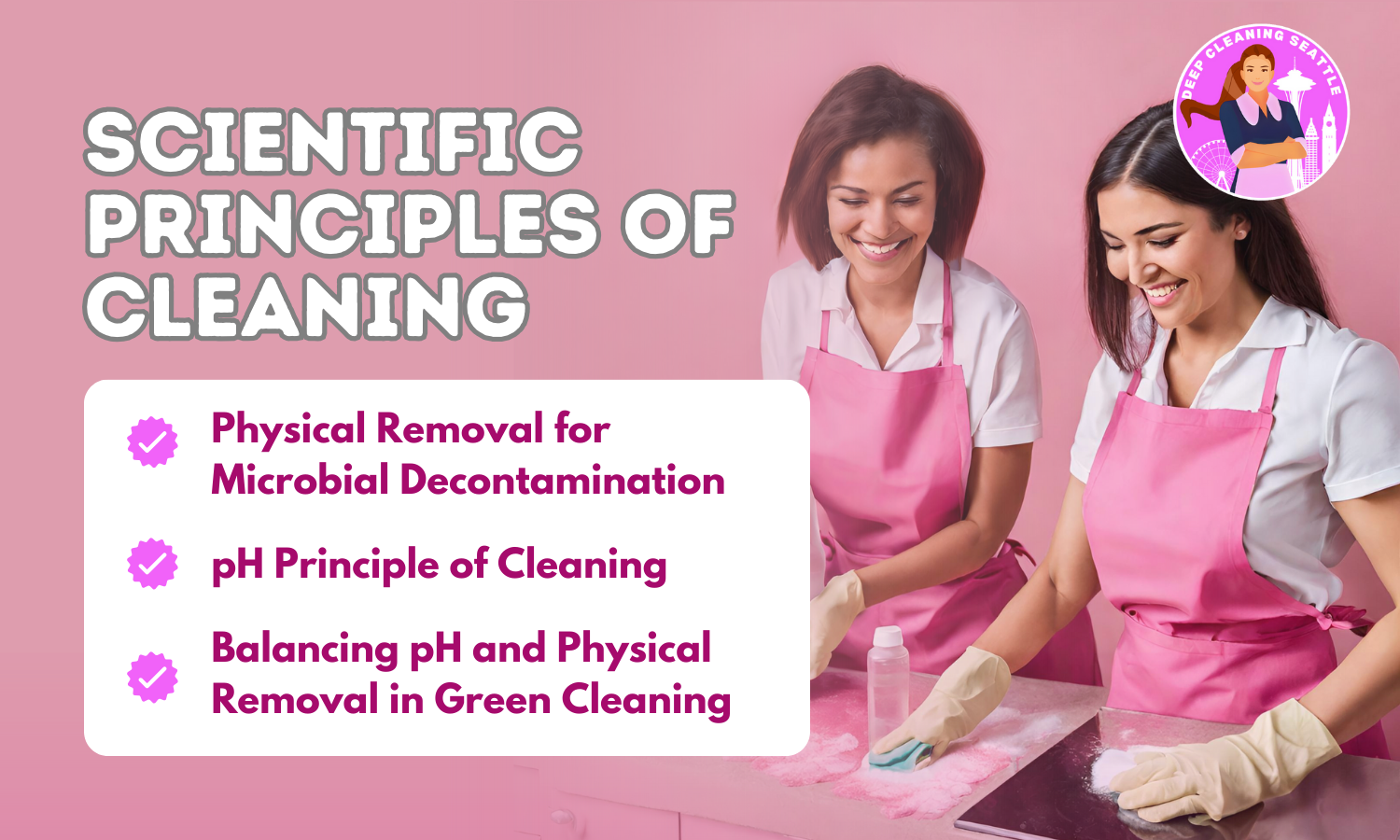What are the Scientific Principles of Cleaning?
House cleaning and Apartment cleaning processes involve multiple factors that influence their effectiveness. Two fundamental principles, pH and physical removal, play crucial roles in achieving optimal cleanliness. Understanding and balancing these principles are essential for efficient cleaning procedures. In this article, we will delve into the significance of pH and physical removal in cleaning, drawing insights from the concepts discussed in the provided articles. By gaining insights into these principles, you can ensure that your cleaning efforts yield results that not only meet aesthetic standards but also create healthier and safer living environments.
1. Physical Removal for Microbial Decontamination
One of the key principles is the importance of physical removal in microbial decontamination. According to the National Institutes of Health, the actual physical removal of microorganisms by scrubbing is just as important as the antimicrobial effect of the cleaning agent used to fully achieve microbial decontamination. Physical removal not only reduces the number of pathogens on surfaces but also eliminates their food sources, hindering their growth. When contaminants are effectively removed, the immediate area is no longer susceptible to their impact. This emphasizes the critical goal of any cleaning procedure – the physical removal of bacteria and soil from surfaces. Understanding and applying the principle of physical removal in microbial decontamination not only reduces the presence of pathogens on surfaces but also interrupts their potential for proliferation by eliminating their nutrient sources. Embracing the principle of physical removal in microbial decontamination aligns with the core objective of cleaning, which is to create a safer and healthier environment by eliminating both pathogens and their potential sources of growth.
2. pH Principle of Cleaning
The pH principle of cleaning is another essential aspect. Pure water, with a pH of 7, serves as the starting point. Altering the pH of water is necessary for killing bacteria and removing common soils. Chemical compounds are introduced to aid in this process. The choice of a cleaning solution with the correct pH and chemical makeup is crucial, depending on the specific surface, the type of soils present, and the desired cleaning results. Apartment cleaners stress the importance of understanding and applying the pH principle to enhance the efficacy of cleaning processes. By mastering both the pH principle and physical removal techniques, cleaning professionals can optimize their cleaning procedures, ensuring not only cleanliness but also a healthier and safer environment for residents and occupants.
3. Balancing pH and Physical Removal in Green Cleaning
The most frequently asked question is, How To Reduce Allergens In Home? For technicians engaged in green cleaning practices, a thorough understanding of both pH and physical removal principles is crucial. Balancing these principles in daily tasks can have a significant impact not only on the frontline technician but also on the overall health of facility occupants.
This blog emphasizes the need for education in achieving this balance. Technicians must be equipped to determine the correct pH strength of cleaning solutions while ensuring effective physical removal of contaminants. Achieving this balance is central to the objectives of green cleaning, which aims to safeguard individual health and preserve the integrity of surfaces within the built environment.
The fundamental principles of pH and physical removal in cleaning processes.
These principles are interconnected and must be carefully balanced for optimal results. Whether focusing on microbial decontamination or adopting green cleaning practices, cleaners and technicians play a pivotal role in implementing these principles effectively.
A well-informed approach to pH and physical removal not only ensures cleanliness but also contributes to the broader goal of creating healthier and environmentally friendly living and working spaces. By adhering to these principles and prioritizing education, cleaners can provide homeowners with the knowledge and practices needed to reduce allergens in their homes effectively, promoting a healthier and more comfortable living environment. Contact Deep Cleaning Seattle now to avail our cleaning expertise and ensure your living or working space is not only impeccably clean but also optimized for your well-being and the environment.

